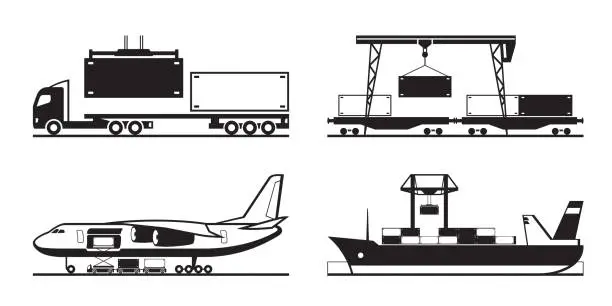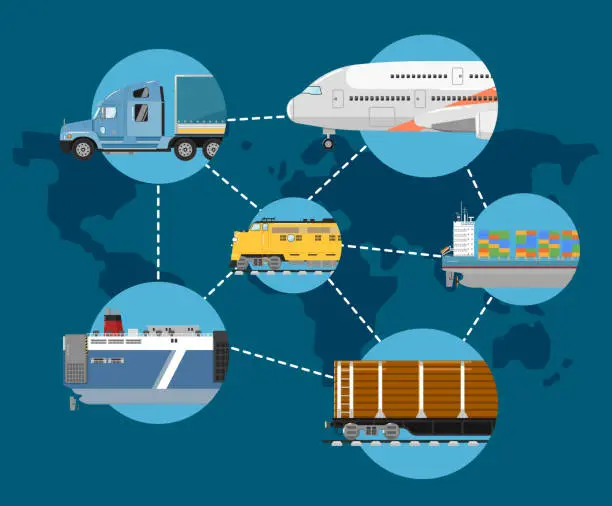
Unlocking Efficiency: The Power of Transportation Efficiency in Supply Chains
- Admin
Efficiency in transportation is a cornerstone of successful supply chain management, driving cost savings, customer satisfaction, and overall competitiveness. In the dynamic landscape of global commerce, businesses strive to optimize transportation operations to minimize lead times, reduce costs, and enhance sustainability. In this article, we'll explore the significance of transportation efficiency, examine key factors influencing efficiency in transportation, and discuss strategies for unlocking efficiency in supply chain transportation.
Understanding Transportation Efficiency
Transportation efficiency refers to the ability to maximize the use of resources while minimizing costs and environmental impact in the movement of goods from origin to destination. Efficient transportation operations streamline processes, optimize routes, and utilize transportation modes effectively to achieve timely and cost-effective delivery of goods. By improving efficiency in transportation, businesses can enhance operational performance, respond swiftly to customer demands, and gain a competitive edge in the marketplace.
Key Factors Influencing Transportation Efficiency
Several factors influence transportation efficiency in supply chains:
Mode of Transportation: Selecting the appropriate mode of transportation based on shipment size, urgency, and destination is critical for optimizing transportation efficiency. Air freight offers speed but may be costly, while sea freight is cost-effective for large volumes but slower. Road and rail transportation provide flexibility for inland distribution.
Route Optimization: Optimizing transportation routes to minimize distance, fuel consumption, and transit times enhances transportation efficiency. Route optimization software, real-time traffic updates, and historical data analysis enable businesses to identify the most efficient routes and avoid congestion and delays.
Load Consolidation: Consolidating shipments and maximizing load capacity in transportation vehicles reduce the number of trips, transportation costs, and carbon emissions. Efficient load consolidation requires collaboration with suppliers, logistics partners, and customers to coordinate shipments and minimize empty miles.
Technology Integration: Leveraging technology such as GPS tracking, telematics, and transportation management systems (TMS) enhances visibility, tracking, and monitoring of transportation operations. Real-time data analytics and predictive modeling enable proactive decision-making and continuous improvement in transportation efficiency.
Strategies for Unlocking Transportation Efficiency
To unlock efficiency in transportation and supply chains, businesses can implement the following strategies:
Collaboration and Partnerships: Collaborating with transportation providers, logistics partners, and suppliers fosters information sharing, resource pooling, and process optimization. Strategic partnerships enable businesses to leverage economies of scale, reduce costs, and improve transportation efficiency.
Continuous Improvement: Embracing a culture of continuous improvement and implementing lean principles in transportation operations drive efficiency gains and cost savings. Regular performance monitoring, benchmarking, and process optimization identify inefficiencies and opportunities for improvement.
Sustainable Practices: Incorporating sustainable practices such as fuel-efficient vehicles, alternative fuels, and eco-friendly packaging reduces environmental impact and transportation costs. Sustainable transportation initiatives enhance brand reputation, attract environmentally-conscious customers, and contribute to corporate social responsibility goals.
Supply Chain Visibility: Enhancing supply chain visibility through advanced tracking technologies and collaboration platforms enables real-time monitoring of inventory, shipments, and transportation routes. Improved visibility enhances decision-making, reduces lead times, and enhances transportation efficiency.
Conclusion
Efficiency in transportation is essential for optimizing supply chain performance, reducing costs, and meeting customer expectations in today's fast-paced global marketplace. By understanding the key factors influencing transportation efficiency and implementing strategies for unlocking efficiency in transportation operations, businesses can enhance competitiveness, drive growth, and achieve sustainability in supply chain management. As we continue to navigate the complexities of global commerce, let us harness the power of transportation efficiency to build resilient, agile, and customer-centric supply chains for the future.
